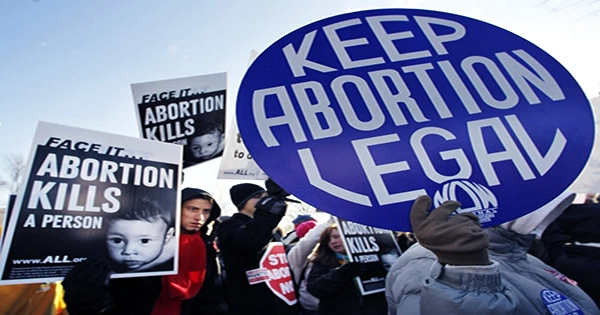Roe v Wade, one of the most important Supreme Court decisions in American history, is set to be overturned, according to a leaked draft judgment acquired by Politico. The debate over Roe v Wade, and abortion in general, involves problems of morality and legislation, but it is also informed by scientifically researched questions. Some of this is incorrect in the leaked draft. Roe v Wade, which declared that the right to choose whether or not to proceed with a pregnancy was under the Fourteenth Amendment’s Right to Privacy, is supported by two-thirds of Americans, a percentage that has been reasonably consistent since it was approved in 1973.
Nonetheless, most Republican-controlled legislatures and governors have approved or are considering legislation that would overturn Roe v Wade. One from Mississippi is now being heard by the Supreme Court. Much of the debate over abortion is on how we prioritize bodily autonomy and reproductive rights versus the rights of a future child. It also involves legal and constitutional issues unique to each country.
In the course of their arguments, opponents of legalized abortion frequently say or suggest things that can be empirically confirmed. Mississippi legislators have “discovered that at five or six weeks’ gestational age, an ‘unborn human being’s heart begins beating,” according to the leaked text. Despite the fact that the statute in question allows abortion until week 15 of pregnancy, several states only allow six weeks under “heartbeat acts.” However, no heart – and hence no beating – can be detected at this stage. Instead, at six weeks, a set of cells that will later control cardiac timing begin sending out electrical impulses. Doctors can now identify these signals because to advances in ultrasound technology, which was previously impossible. Few gynecologists consider this a heartbeat; it can even happen in fetuses who never develop a working heart.
The belief that aborted babies experience agony during the process is popular, as evidenced by the title of the anti-abortion propaganda film Silent Scream. Despite this, the vast majority of abortions in the United States (and abroad) occur within the first trimester. The fetus is still far from having a fully formed neural system capable of sensing pain. Another empirically testable topic is how people who have had abortions feel about the decision afterward. With tens of millions of women having had operations to end their pregnancies, some will inevitably regret their decision or suffer with the stigma associated with the treatment.
Those who go public about it have their voices magnified with the suggestion, or actual declaration, that this is the norm — but studies show that five years later, 95 percent of those who went public about it believe they made the correct decision. Attempts to outlaw abortion frequently exaggerate the hazards of both abortion and childbirth. With roughly 700 fatalities each year, births in America are far riskier than in any other prosperous country.
Anti-abortion laws have been known to punish miscarriages, reflecting a fundamental misunderstanding of the rate at which desired human pregnancies fail. In the United States, 10% to 20% of known pregnancies end in miscarriage, but that number may be more than half of all pregnancies because many women who have an abortion become pregnant before they realize it. Even the termination of ectopic pregnancies was proposed as a state law in one form. These occur when the fetus implants outside of the womb, most often in the fallopian tubes. These can never result in the birth of a viable child, and without medical assistance, the pregnant woman typically dies. A discussion with someone who has studied anatomy may have clarified this.
Finally, every argument for outlawing abortion brings with it the premise that such legislation will lower the number of abortions done. Abortion rates now are identical to when it was prohibited in most states, which makes logical sense. The factors that determine abortion rates have been thoroughly examined by social scientists and epidemiologists, and their results are clear: access to contraception and excellent sex education are far more essential than the procedure’s legality. Bills like the one Mississippi approved may not result in many fewer abortions, but they do result in fewer safe abortions.
















